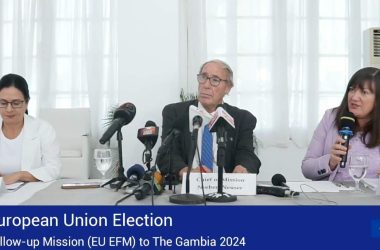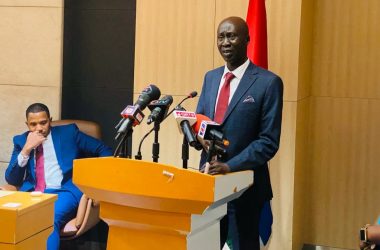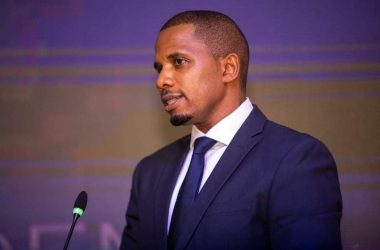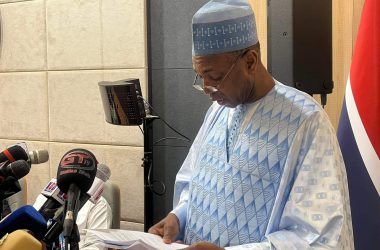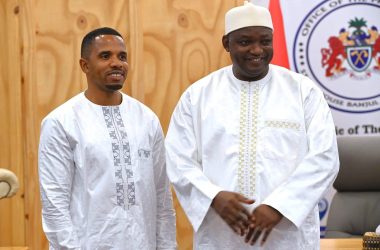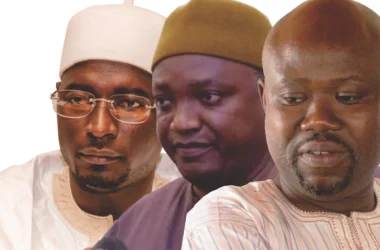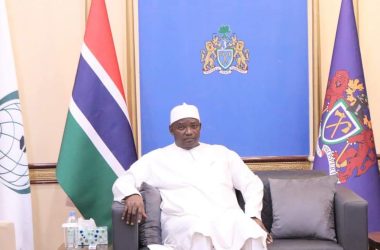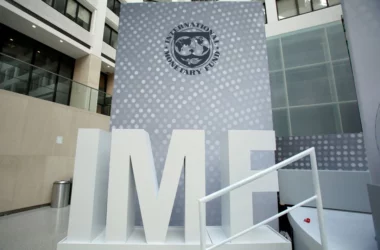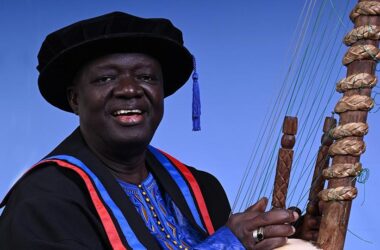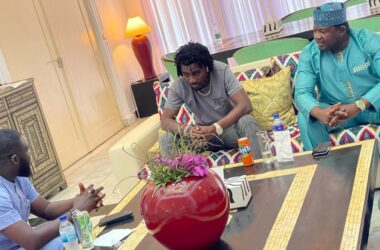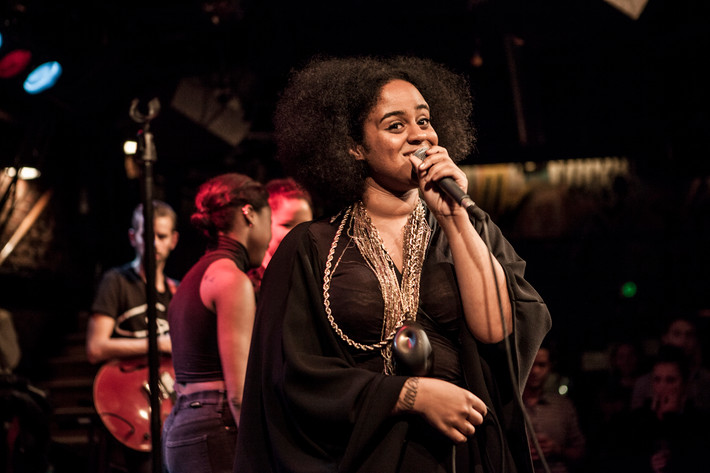
(JollofNews) – The 23-year-old musician, on her struggles as an outsider, her defining school years and her fascination with the way we communicate it’s almost impossible to be original in the year 2014.
Since the mid-2000s, it seems as though we’ve been stuck in a perpetual cycle of cultural revivalism, calling on the strongly coloured characters of the past to define and celebrate how we interpret the present.
Which is why emerging artists like Seinabo Sey (pronounced Say-na-bo Sea) are so exciting. Her influences, largely formed by her dual Swedish and Gambian upbringing, are unique. Her sound, just as interesting – a fascinating, accessible blend of Swedish pop noir, African rhythms and down-tempo RnB.
At 23, she’s already scored No.1 hits on Hype Machine and Shazam with her debut single “Younger”. And she looks set to do the same when releases her next single, “Hard Time”, on Monday 14 July. She’s currently in the studio in Stockholm recording her debut album with Magnus Lidehäll (Mapei, ‘Don’t Wait) – a producer she met via some pretty deft Facebook stalking. It’s out later this year. Until then, here’s everything you need to know. She found being a cultural ‘outsider’ was a creative blessing, but a social curse…
“We moved to Gambia from Sweden when I was six years old, because my dad was from there. It was definitely a culture shock. “I’ve always been a little bit of an outsider where I am and I’ve had to kind of learn to understand people in order for them to understand me. To make them understand me, speak their language, or understand their culture. So it perhaps made me a little bit over-analytical about how people feel. But it helps me with my music and writing because I like to think of lots of different ways to get my message across.
“I had a hard time when I came back to Sweden and started school, because I looked different. And we moved to a really small town on the west coast of Sweden and there were no brown people around. It didn’t really get any better until I started music school at about 10 years old.” Her earliest memory is the stuff of child nightmares…
“I went to school in this really ghetto part of Gambia, and we didn’t have any doors or things like that. I remember taking these vaccine shots [injections] and I was scared. And I remember getting the vaccine, and getting out of that room, and everyone was applauding and really proud of me. I must have been, like six years old.” Her dad is the famous West African musician, Mawdo Sey…
“I think his career was a rollercoaster, but when I lived in Gambia as a kid he was quite famous there. I just remember maybe taking the back seat because he was sort of the star. I was around musicians all the time but the spotlight was never on me. No one really cared if I was sitting about in the corner wanting to sing or not. I was kind of shy, so nobody thought about it. “I’ve always been very impressed by him. He had a vibe and an aura and I remember thinking, ‘People listen to him’. He’s really funny. He’s definitely my biggest idol. I wanted to be like him.”
Her school days shaped her future sound… Well. Apart from the physics.
“I got along with mostly everyone, but music school does that to you. We had to sing in a choir all the time, so we had to get along with everyone. I was really good at English, because I started school in Gambia in English and so I was ahead of everyone else for a while. Physics, weird enough!”
“I remember Alicia Keys and Usher had released a song called “My Boo” and my music teacher got me to sing a duet with a friend of mine and I remember being so nervous, because I loved to sing but I could never fathom singing by myself. And when I did that I remember how proud I was of myself. I was 12.
“I tried to push away the whole dream and thought I had to do something serious, I’m going to be a lawyer, until I was 15 or something. But then I realised I couldn’t really live in that small town so I moved to Stockholm and started music school. She used to be a rap side-kick…
“Meeting this guy called Frank Noble, and we started this little group called Death Chronic. It was really like experimental, RnB , soulish. We made a couple of songs and got a little bit of attention here in Stockholm on all the blogs and stuff like that. And I remember tagging all the musicians I wanted to hear the song in on Facebook. And there was this rapper that picked up on it and we became friends. I went on tour with him, I became a rap sidekick for a year, it was really random. And then he had a group with the guy producing my record with (Magnus Lidehäll), and he’d produced Britney Spears before. It was a very organic thing.”
If she wasn’t on stage, you’d find her in a museum… Or in a kitchen.
“I love artistry and I’d love to run an art gallery. “I’m quite an amazing cook, actually. I won’t even be humble about it. It’s not very classical but I can improvise. I make a mean Gambian stew with peanut butter, that you can put meat into if you want. You can convert anyone with that.”
She’s serious about her debut album. And a little concerned…
“I’ve been trying not to be too worried. But I guess a little worry and a little pressure is good. I’m trying to break genres, and not really think about it, putting in as many influences from my life and things that I’ve heard as possible and just keeping really true to my idea with the lyrics. And write about all the important aspects of life. And be quite serious about it as well because I think you need some serious music.”
She’d be a really great Indy People writer, because she loves…
“Speaking to people. How things always seem to fall with bad communication and not being able to express your emotions and I struggle with that every single day. It seems like everything is always alright if you speak up and say what you really feel.”
Source: Independent.co.uk
